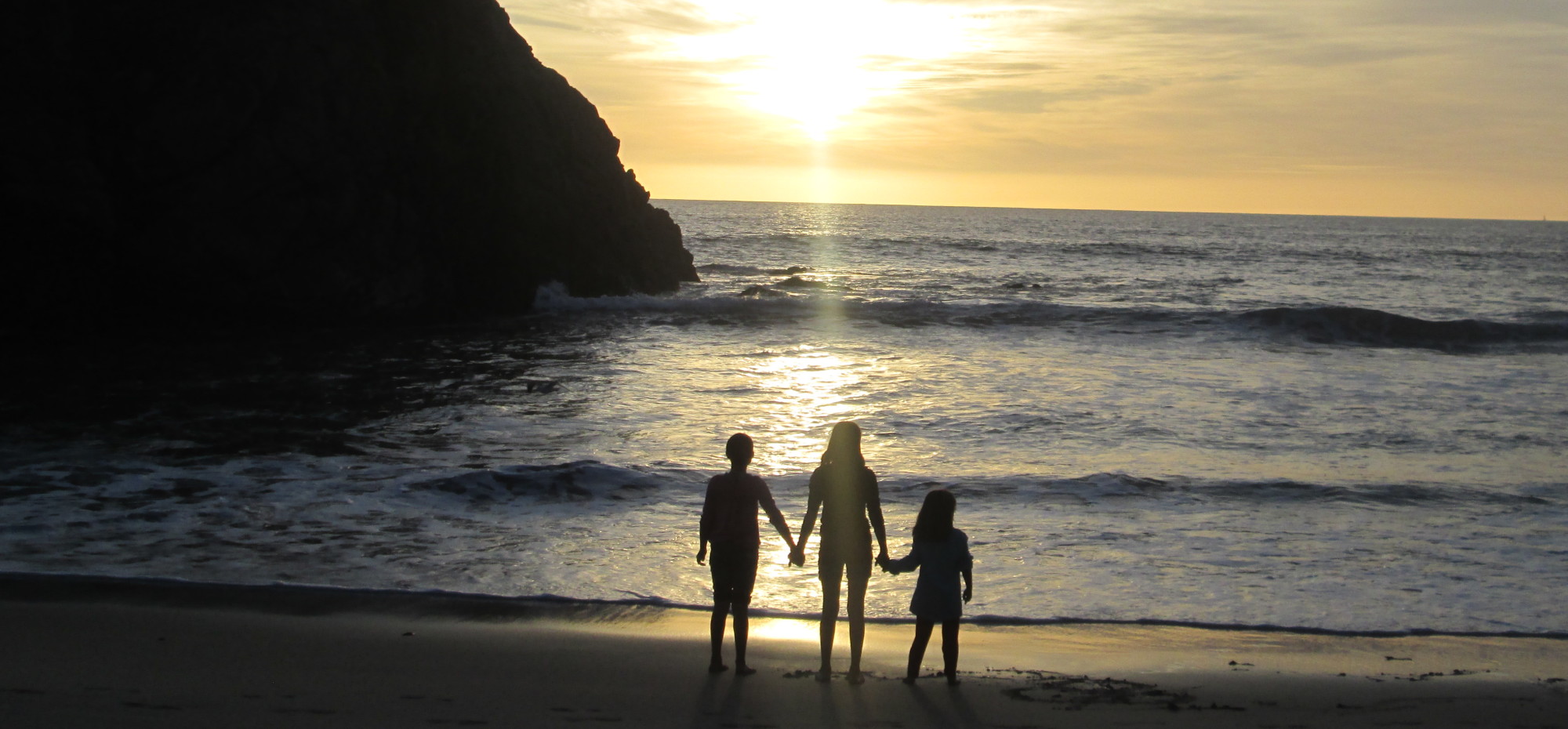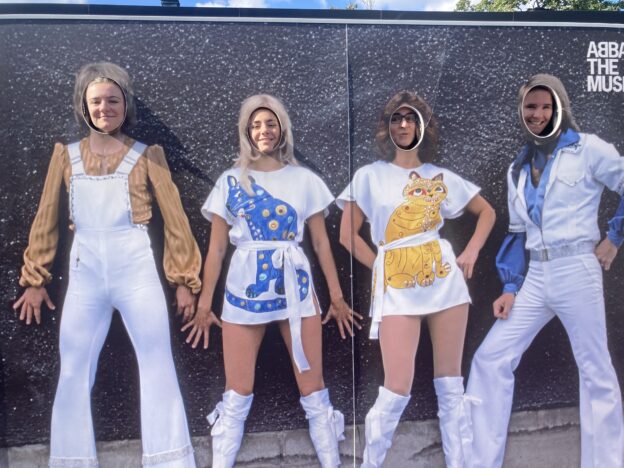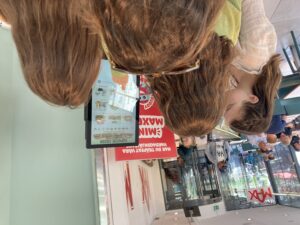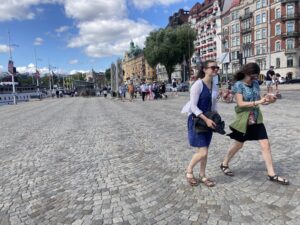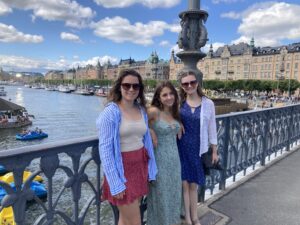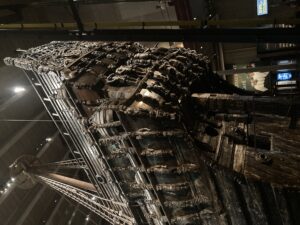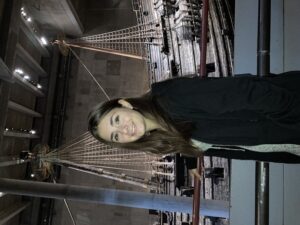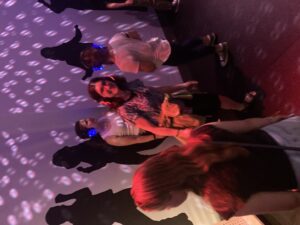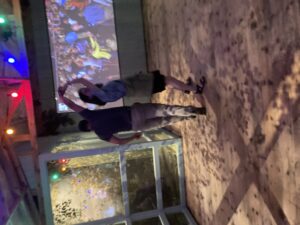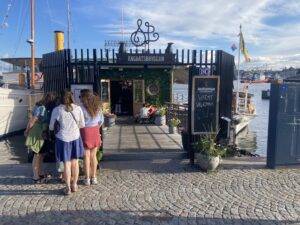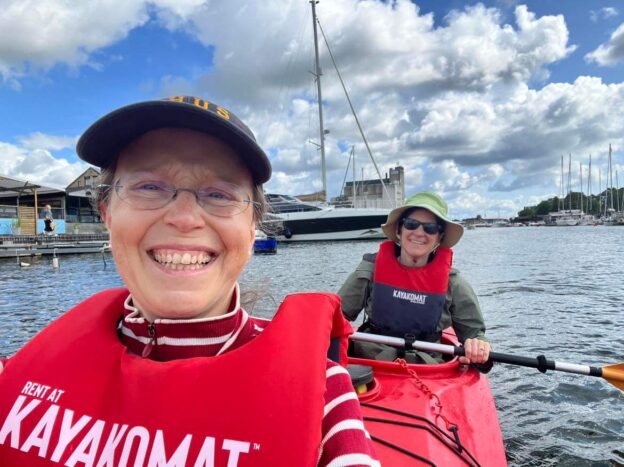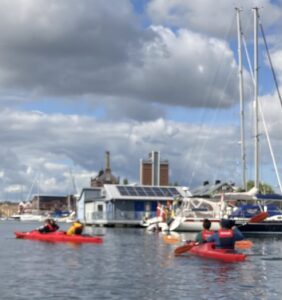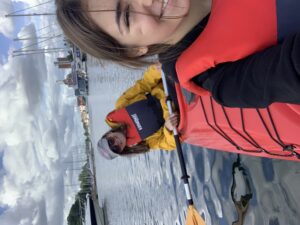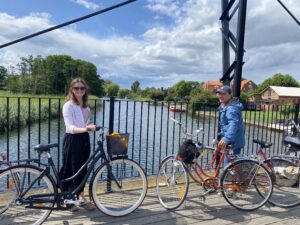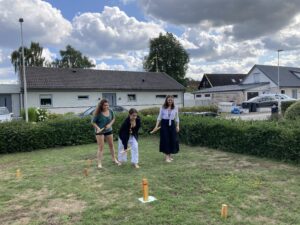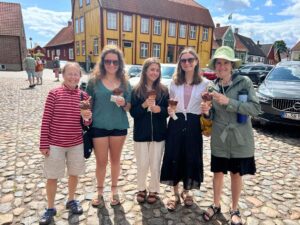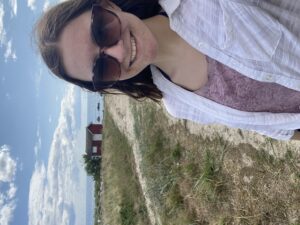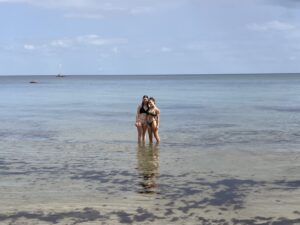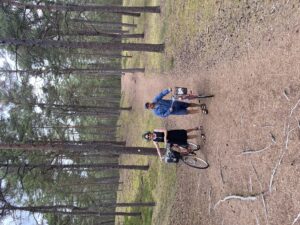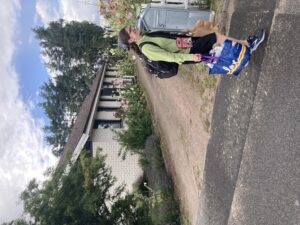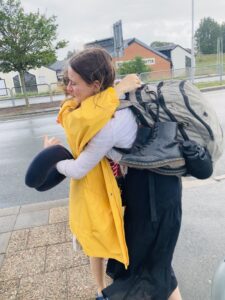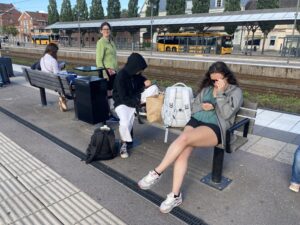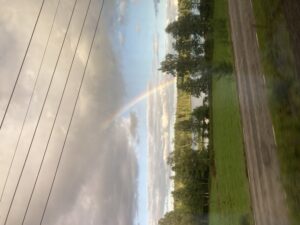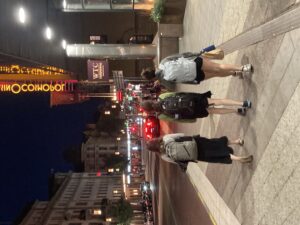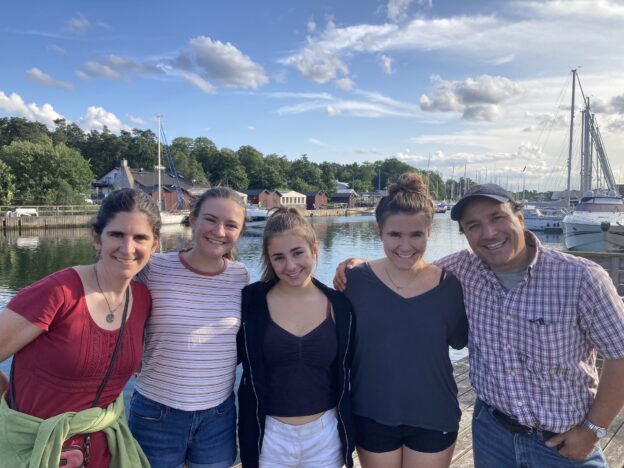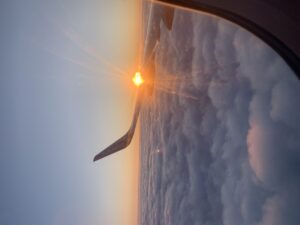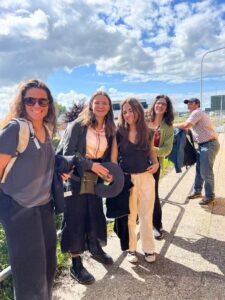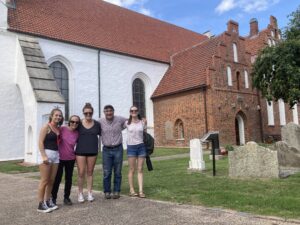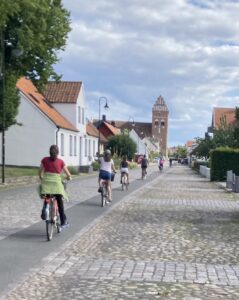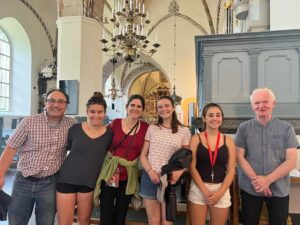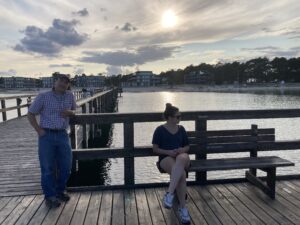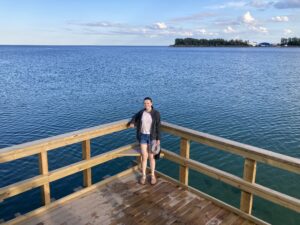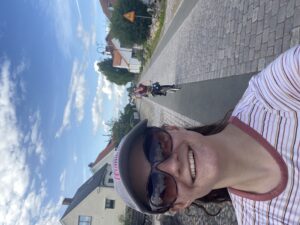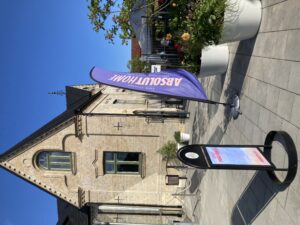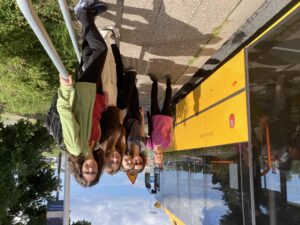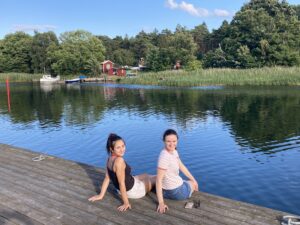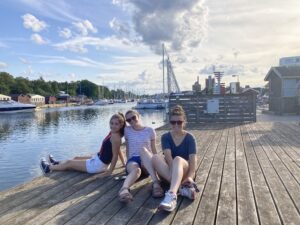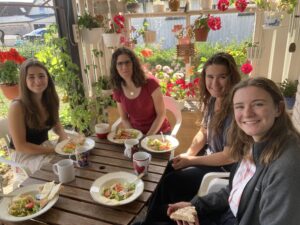Perhaps Stockholm deserved better from us, but we really must have needed the sleep. We did not rouse ourselves until almost noon today. Hip Swedish hostels are surprisingly quiet in the mornings.
Somewhat refreshed, we met the bright sunlight of this bright city and started to check off things people do when they’re in this country.
First, we went to Max. It’s Sweden’s answer to McDonalds — though they have McDonalds and even Burger King here, too. The selection at Max is quite broad and the food is good. Zoe wandered farthest off the beaten path by getting a getting a cheese burger that consisted completely of cheese, which had been grilled just like it was a burger. She reviewed it pretty highly.
After that we walked around a lot. This is a very walkable city, with wide sidewalks and clearly marked bike lanes that we’ve mostly been able to avoid encroaching. Car traffic seems to be less than in other major cities we’ve visited. Between the busses, trolleys, metro stations, and ferries, there seems to be plenty of public transportation options. But with streets and architecture as appealing as Stockholm’s, walking seems to be the way to go.
Our feet brought us to a wide pedestrian walkway flanked by stately buildings on one side and the harbor on the other. There were plenty of cafes in full lunch mode by the time we made it over. Some of the cafes and bars stretched out onto docks in the water between fancy boat moorings and ferry landings.
The next thing to do in Sweden, and the main goal of the day’s walking, was to get us to a museum. There are lots of museums in Stockholm, and they come in many varieties. Our first choice focused on a 17th Century sailing ship called the Vassa. It was one of the largest ships of its time and it was very richly decorated and heavily armed. And it sank after sailing only 1,000 feet or so because it didn’t have enough ballast in the bottom to keep it upright.
It’s difficult to imagine people in the US setting up a top-notch museum based on a not-quite-so-proud moment in our engineering history, but that’s what they did here. The Vassa Museum is an amazing place centered around the ship, how it was built, and how it was resurrected from the bottom of the harbor in the 1950s.
The museum’s 20-minute movie about the Vassa’s saga ends with the idea that if the ship had been more seaworthy it would have been destroyed or dismantled by now. Becuase it sank so quickly and so close to the city it was preserved in the mud and relatively easy to access. They say that 95 percent of the ship, which is on full display in the museum’s main hall, is from its original construction.
From here, we had many choices of museums to browse. There was one based solely on other shipwrecks besides the Vassa. There was one on vikings and one on spirits (not the occult kind, but the distilled kind) and one on nordic life. As we decided which to visit next we chewed on long ropes of Swedish licorice and contemplated scrapping everything for a visit to the amusement park that towered over the section of town we were in.
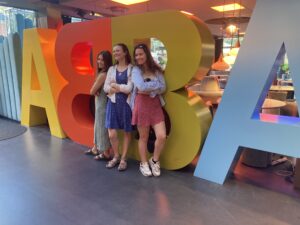 Actually, most of us wanted nothing to do with the amusement park, and we all pretty much knew where we wanted to go. The licorice ropes were just to keep us occupied until our allotted time came for us to enter the ABBA museum. And so, once 16:30 came around on our clocks, we embarked on an adventure into a world which few people realize exists. It is a world where ABBA merits a whole museum that is crowded enough to make people wait for assigned times to enter.
Actually, most of us wanted nothing to do with the amusement park, and we all pretty much knew where we wanted to go. The licorice ropes were just to keep us occupied until our allotted time came for us to enter the ABBA museum. And so, once 16:30 came around on our clocks, we embarked on an adventure into a world which few people realize exists. It is a world where ABBA merits a whole museum that is crowded enough to make people wait for assigned times to enter.
The course of the museum starts at the end of ABBA’s story, with Benny, Bjorn, Frida and Agnetha recording themselves with special cameras for the hologram ABBA experience currently running in London. This is the phenomenon where people pay to go to a concert to watch ABBA holograms perform with a live band.
At least we got to see actual ABBA stuff, like their recording studio, which was moved to the museum, and the home made double base that was part of Benny’s (or perhaps Bjorn’s) first band. And the costumes! Oh, the costumes. Capes and jumpsuits for miles. We are all pretty knowledgeable about ABBA now. Ask us for some trvia; we’ll probably know it.
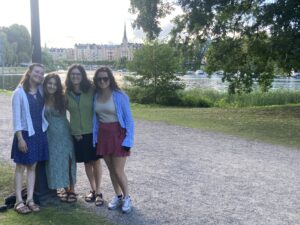 About now we had to start being careful. Our checkout time tomorrow is 10 a.m. No sleeping until noon for us. So we shouldn’t be staying out too late either. We passed on any further museum visits and continued walking through the gardens of the surrounding area until we were able to retrace our steps back toward the hostel.
About now we had to start being careful. Our checkout time tomorrow is 10 a.m. No sleeping until noon for us. So we shouldn’t be staying out too late either. We passed on any further museum visits and continued walking through the gardens of the surrounding area until we were able to retrace our steps back toward the hostel.
Here we did something that most people do in Sweden, we avoided stopping in for a drink on one of the harborside bars we passed in the morning. We were sorely tempted to give it a try. We even stopped into one; but we were turned off by two things: 1.) They strangely didn’t have a non-alcoholic option besides mineral water; 2.) The alcoholic drinks were stunningly expensive. None of us needed to try a $29 mojito. We have to think that the average Swede would make the same choice.
It was time now to follow our standard vacation routine of wandering around until we stumble upon a dinner plan. Tonight we stumbled upton Italian food.
We managed to get back to our place at a reasonable enough hour for some of us to take on some blogging and other to get a little bar hopping in the hotel lounge.
